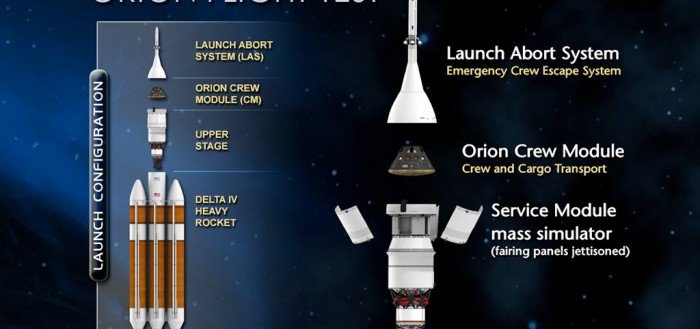As we come closer to the launch of the Orion Space Craft on the fourth of December, more details of the launch configuration have been revealed. For its first flight test, the SLS will be configured for a 77-ton (70-metric-ton) lift capacity and loft an uncrewed Orion spacecraft beyond low-Earth orbit — as currently planned, out past the moon and back. The 322-foot-tall (98 meters) rocket will be powered by four main engines and two solid rocket boosters repurposed from the retired space shuttle program.
In its proposed, most powerful configuration, the SLS will be able to provide a lift capability of 143 tons (130 metric tons), which could enable missions even farther into the solar system. NASA is planning for its first crewed Orion-SLS mission to send astronauts to a robotically-redirected asteroid in the vicinity of the moon, targeted for 2021. Now at its departure site, the 72-foot-tall (22-meter) Orion, complete with its booster adapter section, will be hoisted 170 feet (52 meters) into the air and mounted to the United Launch Alliance Delta IV Heavy rocket that will launch it into Earth orbit. The EFT-1 mission is scheduled to lift off Dec. 4 at 7:05 a.m. EST (1205 GMT), just after sunrise.






